#tsujigahana
Text

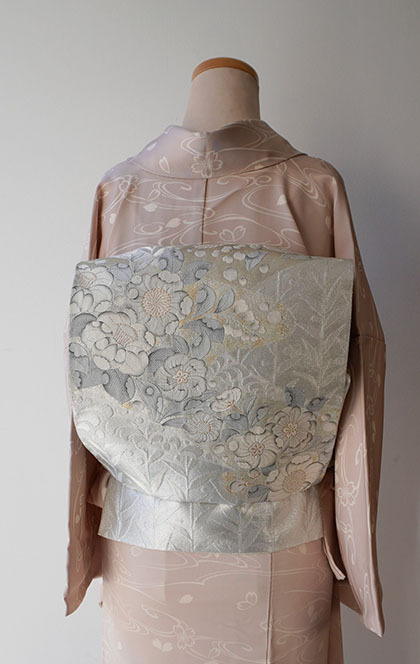
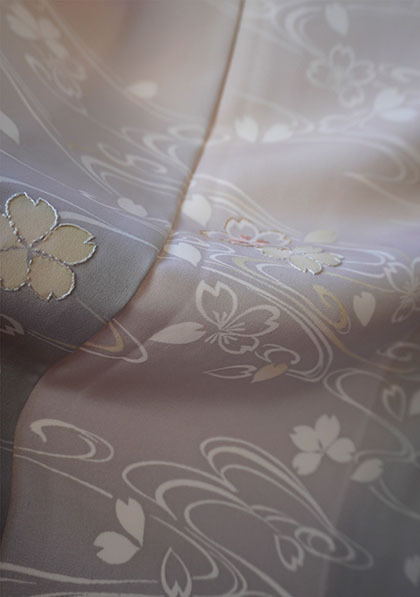
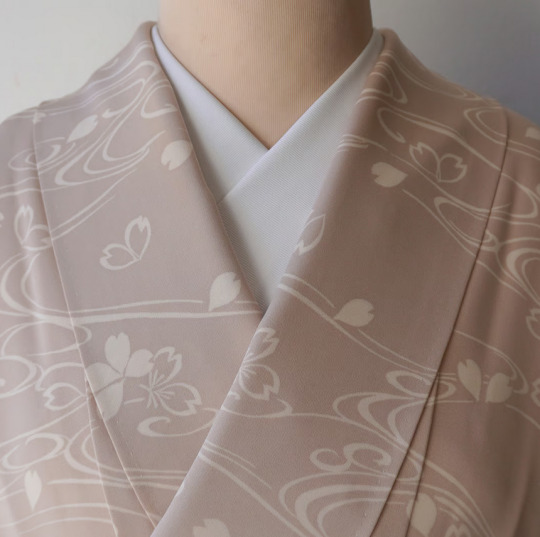
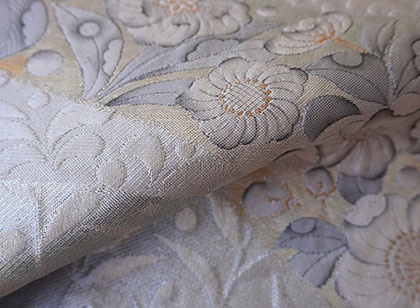
Romantic spring outfit in soft powdery colors, pairing a kimono depicting sakura (cherry blossoms) petals swirling in a stream, with a woven obi with tsujigahana-inspired flowers.
Tsujigahana is a Muromachi era tie dye technique, especially used for flowery patterns, which was lost and revived by textile artist Itchiku Kubota (I've talked about his works in past notes).
#japan#fashion#kimono#obi#spring in japan#sakura#cherry blossom#stream#running water#ryuusui#tsujigahana#Itchiku Kubota#着物#帯
376 notes
·
View notes
Photo

Kimono “Myriad Green Leaves” (1992)
Designed by Machiko Furusawa
Silk figured with tie-dyeing and hand-painted decoration
Designed and dyed by Machiko Furusawa, woven by Kyoko Matsuo
Kimono of hand-spun plain weave silk (so called jitsuhata-ori). The silk woven by Matsuo Kyoko of Saga Prefecture. The garment has has a resist-dyed and hand painted design in green, brown, blue and black of flowers, leaves and dragonflies against a lattice ground.
The kimono is unlined and not tailored for use.
The lyrical design of this kimono was created using a complicated and time-consuming process. Various areas of the cloth were protected by being stitched around, gathered up, wrapped in plastic and then tightly bound with thread before each dye was applied. Chinese ink, called sumi, was then used to paint in the flower petals and veins of the brown leaves and to accentuate other parts of the design. Furusawa derives her inspiration from tsujigahana, a Japanese textile form that was highly popular between the 14th and early 17th century.
Source
1 note
·
View note
Photo
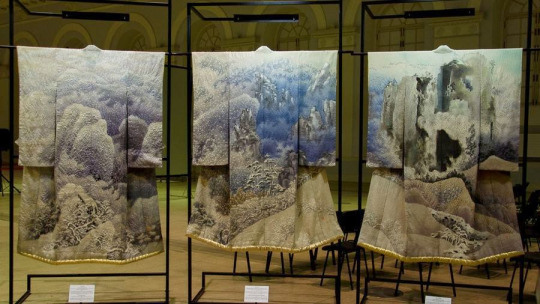
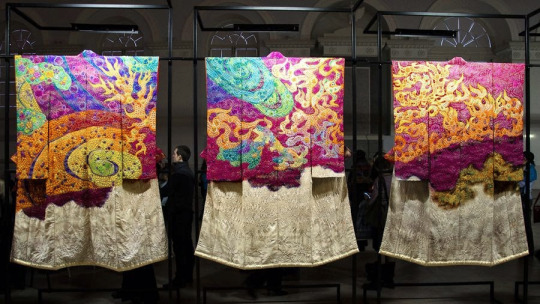





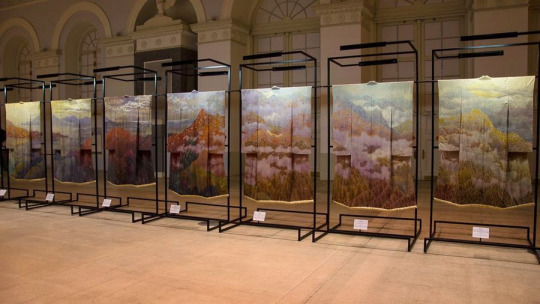

For many years, until Ichiku Kubota revealed the secrets of creating a kimono (and this happened when the artist was 63 years old), the family lived on the money earned from the sale of his wife’s jewelry.
When the young 20-year-old artist Ichiku Kubota crossed the threshold of the Tokyo National Museum in 1937, he did not suspect that he was waiting for impressions that would change his whole life. In the halls of the museum, Ichiku first met Tsujigahana (literally, “Flowers at the Crossroads”) - Japanese 16th-century kimono manufacturing techniques that lasted only a hundred years. Kubota was so fascinated by what he saw that he decided to devote his life to the revival of ancient art.
In the process of improving Tsudzigahan’s technique, Ichiku Kubota gradually transformed it into his own method, which he later called Ichiku Tsujigahana.
Some kimonos created by the master were intended to be worn by connoisseurs and connoisseurs of his art, while others were used in stage productions of the No and Kabuki theater. The remaining works of Ichiku Kubota left in his collection, as they represented the key stages in the evolution of his art.
[text and images from article by Olgado of Russia]
2K notes
·
View notes
Link



I think you can tell when Ichiroya lists a particularly good item, they seem to take much better and more detailed shots XD
4 notes
·
View notes
Photo

Sunday Showcase…
“Tsujigahana” Woman’s Furisode Kimono
Was $399, Now $349! Click here to purchase or browse.
For additional savings, use the coupon code TB2018 to receive 10% off your entire purchase.
This furisode is especially rare as it features tsujigahana - a design technique that is harder and harder to find. Tsujigahana combines shibori, stenciling, and painted details.
Large sweeping arches of purple and pink create a movement and draw the eye across the kimono. Many different shibori techniques were used to create the arching bands, the florals, and the very cute plover birds.
This listing is for a traditional vintage furisode kimono originally created for a young, unmarried woman. Furisode are worn for formal events, such as Seijin-no-hi (Coming of Age Day, sometimes translated as Adults Day) in early January. Furisode are also worn for weddings, recitals, receptions, and other celebrations calling for formal attire. Note the long sleeves (furi = long, sode = sleeves) sometimes called "butterfly sleeves", which flow with grace when she gestures, attracting male attention!
#tsujigahana#shibori#japanese shibori#japanese kimono#kimono#vintage kimono#vintage Japanese kimono#furisode#furisode kimono#coming of age day#adults day#silk kimono#i love kimono#woman's kimono
2 notes
·
View notes
Photo
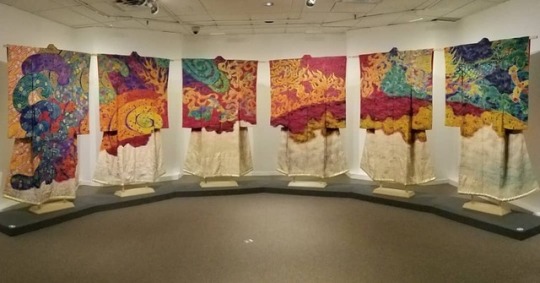
Details of the master. They can't be described by mere words. 一竹辻が花のディテール*面白い*(*˘︶˘*).。.:*♡ #kimono #textilemusuem #itchikukubota #tsujigahana #exhibit #久保田一竹 #着物 #辻が花 #トロント #toronto (at Textile Museum of Canada)
For Tumblr users: Click on the image to see the rest in the set. I uploaded 10 images that Tumblr doesn't feel like showing, so you can really get a better appreciation for it over on Instagram ^^
49 notes
·
View notes
Text
tsujigahana on my mind
tsujigahana on my mind

View On WordPress
0 notes
Photo
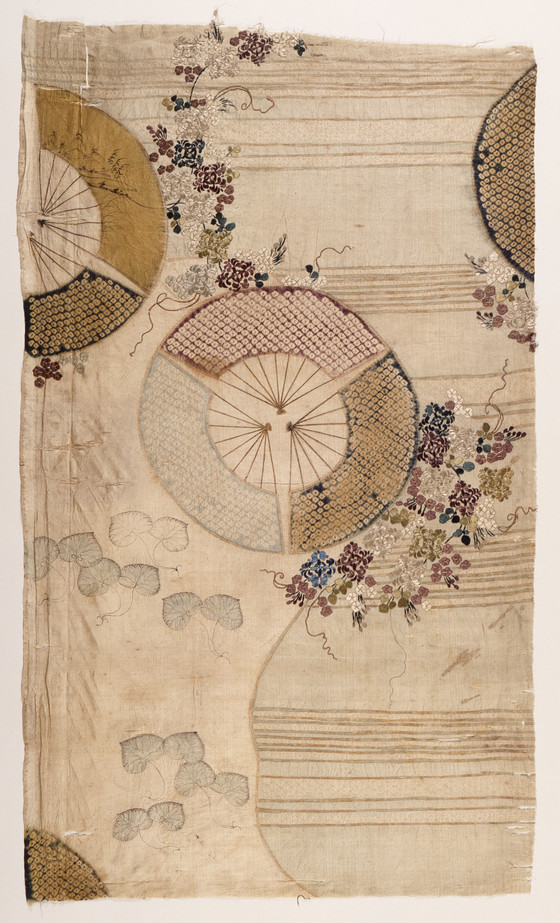
Kosode Fragment with Fan Roundels, Flowering Vines, and Wild Ginger Leaves, Japan, Momoyama period (1568-1615), late 16th-early 17th century Costumes; principal attire (entire body)Tsujigahana style; tie-dyeing (kanoko shibori), silk thread embroidery, ink painting (kaki-e), and gold leaf (surihaku) on white plain-weave silk (nerinuki)26 1/4 x 15 1/4 in. (66.67 x 38.74 cm)Gift of Miss Bella Mabury (M.39.2.304) The LACMA Los Angeles County Museum of Art
Costume and Textiles
Not currently on public view
#kosode#textiles#resistdyeing#tsujigahana#japanese#momoyama period#lacmc#lacma los angeles county museum of art
5 notes
·
View notes
Photo
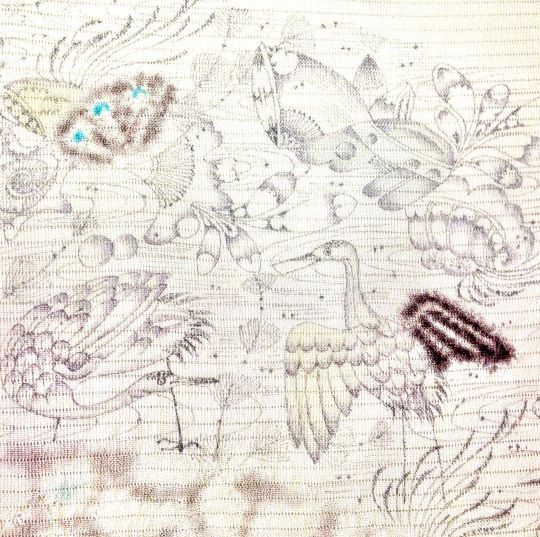
辻ヶ花の夏帯。 これもだいぶ前に作ったもの。 辻ヶ花の古い小布のデザインをアレンジしたもの。 鶴描きたさでこの模様。 ようやっと保育園が始まったものの、なかなか慣れず毎日保育園コワイ、行かない、と泣き、日曜日は一日中泣きべそで訴えてくる。今朝もずっと泣きべそ。 不憫になってしまい、今日はお休み。。 会社員じゃないから出来ること。しかし、オール出来高制な自営業としては仕事が進まずツライところ。。 いつになったらこの繊細な作業が出来るかなあ… #onomatopee_lab #yoyogipark #handdyed #japaneseculture #tsujigahana #illustrator #drawing #dyeing #yuzen #yuzendyeing #kimono #obi #japantraditional #handcrafted #traditional #art #イラスト #落書き #友禅 #着物 #帯 #染色 #伝統工芸 #辻ヶ花 #名古屋帯 #鶴 #手描き友禅 #夏帯 #樹々に癒された #代々木公園 (代々木公園 Yoyogi Park) https://www.instagram.com/p/CBcTaPpARSG/?igshid=obj8g4hkcugj
#onomatopee_lab#yoyogipark#handdyed#japaneseculture#tsujigahana#illustrator#drawing#dyeing#yuzen#yuzendyeing#kimono#obi#japantraditional#handcrafted#traditional#art#イラスト#落書き#友禅#着物#帯#染色#伝統工芸#辻ヶ花#名古屋帯#鶴#手描き友禅#夏帯#樹々に癒された#代々木公園
0 notes
Photo


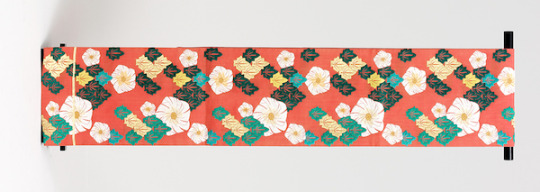

Parade of Nations - Tajikistan
French: Tadjikistan // English: Tajikistan // Japanese: タジキスタン (Tajikisutan)
Tajikistan formed its National Olympic Committee in 1992 and participated in its first Olympics as a country at the 1996 Atlanta Summer Olympics. They haven’t hosted any Olympic Games, but they’ve participated in 6 Summer Games and 4 Winter Games. The Olympic sports in which Tajikistan has medaled are Athletics, Boxing, Judo, and Wrestling.
Kimono Maker: Kenji Mori/ 森 健持
“"Tsujigahana" that appeared in the latter half of the Muromachi period and disappeared in the Edo period. Mysterious beauty using squeezing and dyeing with a click. Somewhere ephemeral beauty. Squeeze the most difficult "straight line" with the aperture. It is extremely difficult to overlap straight lines with geometric patterns and thread insertion. In the Kachin dyeing using ink, each petal has a blur and worm-eaten, which is a work that incorporates Japanese aesthetics abundantly.”[1]
Obi Maker: Saito-Orimono, Supervised by Hakusen/ 齋藤織物 監修 帛撰
“This weave that looks like embroidery is "Karaori". Unrefined silk thread called "Kidate" is used for the warp thread, and weft thread is a woven fabric woven by immersing the kneaded thread in water. This is a hand-woven work that expresses the special product "cotton" with the colors of the national flag.” [1]
Bibliography
Source 1 – Kimono Project for Tajikistan
(https://kimono.piow.jp/nation/021.html)
Index Page – IOWKP x Tokyo 2020 Parade of Nations
#kimono#furisode#ofurisode#imagineoneworldkimonoproject#iowkp#tokyo2020#kimonoparadeofnations#kpon#tajikistan#tajikistankimono#tajikistanfurisode
50 notes
·
View notes
Photo

It is always my great pride and joy to see my works worn and I can't express in works how much I appreciate it 🙂 This ensemble was sent to me by a Friend to show you: a wonderful fall coordination with a glorious tsujugahana motif obi. Tsujigahana (辻ヶ花), which translates to "flowers at the crossroads"is a Japanese fabric dyeing technique that uses stitch-resist dyeing (shibori) and ink painting to decorate fabric. It is very dramatic in appearance and has a vintage feel I deeply appreciate. Thank you so much for sharing this with us! ❤ Do you have a fav fall kimono ensemble? (w: Warsaw, Poland) https://www.instagram.com/p/CFHapCIAyJU/?igshid=17jxw4i8yys29
9 notes
·
View notes
Photo

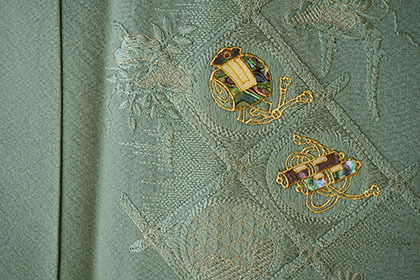

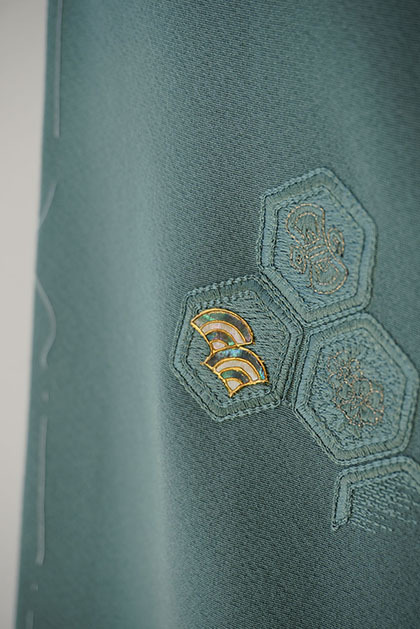

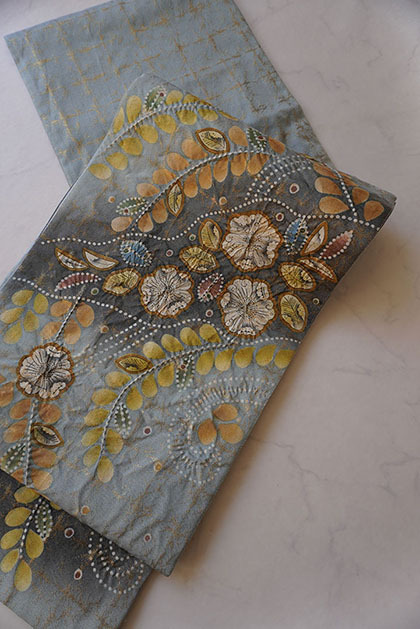
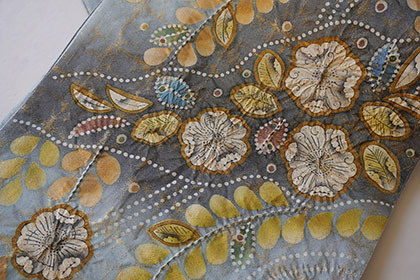
Springy outfit, pairing a fresh blue green kimono with takarazukushi (assorted treasures) some with raden (abalone mother of pearl) inlays, and a lovely tsujigahana (shibori flowers) obi
#japan#fashion#kimono#obi#spring in japan#takarazukushi#takaramono#raden#mother of pearl inlay#abalone#tsujigahana#shibori flowers#着物#帯
158 notes
·
View notes
Text
Techniques
Types of Techniques: Wow I Wish I Had the Means To Do Any of These
Gold Foils
Surihaku
“Printed foil” or “impressed foil”
Originated in the Nara Period
How: paste is applied to fabric (shusu or rinzu satin) over a stencil. The stencil is removed and while the paste is still wet the foil is applied. Any extra is brushed away
Cloth used is usually a deep red, purple, or indigo
Rose to popularity in Muromachi period due to imports
Not many extant garments, as the foil by this time has flaked away
Used often for Noh costumes
Nuihaku
Combo of surihaku and embroidery
Done to give the designs more depth

Photo Source
second half of the 18th–first half of the 19th century
Embroidered silk satin
Egret and Willow Tree The Met Museum
Tsujigahana
Combo of tie-dye, hand-painting, and surihaku
Came about during Muromachi to Azuchi-Momoyama Period in Kyoto

Photo Source
late Momoyama period
Plain-weave silk with resist dyeing and ink painting
Horizontal Stripes, Flowering Plants, Fans, Snowflakes, Clouds, and Bellflowers The Met Museum
Woven Designs
Aya
Twill
Rinzu
Figured satin
Nishiki
Weft and weave threads are different colors
Kinran/Ginran
Gold/silver threads used in weft/weave
Tsuzure-ori
Tapestry weave
Ukimon-ori
“Floating-design weave”
Long lengths of thread are “floated” on the surface of the fabric
Can still be seen in obi designs
Noshime
Striped fabric weave

Photo Source
Meiji Period
Noshime Furisode with Dragons and Clouds in Cloud-Silhouette Band on Dark Brow
Kyoto National Museum
Dyeing and Printing
Kokechi
“Tie-dyeing”
Shibori
A type of non-wax resist dyeing
Fabric is wound with cord and dyed in indigo
Nuishime-shibori
Fabric is sewn together and then dyed
Created during the Muromachi Period
Nui-shibori
Combo of shibori and embroidery
Murago
Different shades of the same color merge into each other
Rokechi
Wax-resist dyeing
Kyokechi
Block-resist dyeing
Kata-zome
Combo of stencil dyeing and block printing
Used during the Nara Period
Gave way to “Komon” (small pattern)
Yuzen-zome
Created by Miyazaki Yuzensai (Kyoto Yuzen)
How: a design is painted on the cloth with paint and dyestuffs, fixed with a liquor made of beans, and sealed with a paste made of rice before the surrounding area is dyed.
At the same time Miyazaki was working in Kyoto, this technique was also being discovered at the same time in Kanazawa in Kaga Province
Kaya yuzen
Bright colors
Considered more charming
Kyoto yuzen
Darker colors
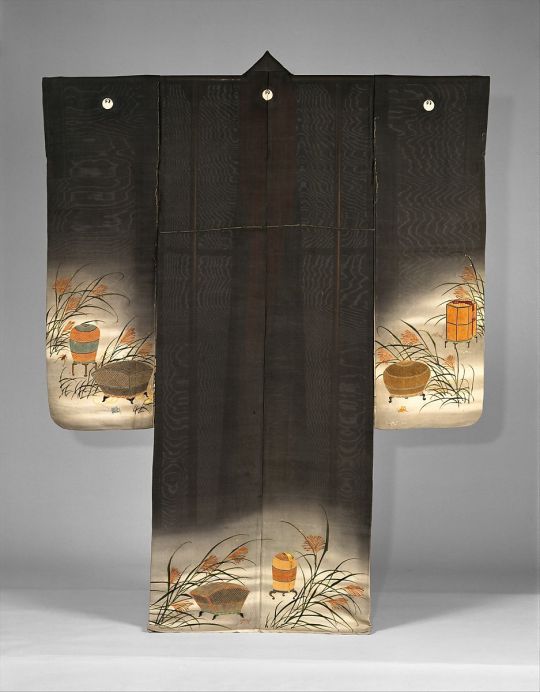
Photo Source
Early Meiji period
Paste-resist dyed (yūzen) and painted silk gauze with embroidery
Unlined Summer Kimono (Hito-e) with Crickets, Grasshoppers, Cricket Cages, and Pampas Grass The Met Museum
Kirihame
Applique and patchwork
[on the topic of Japanese color culture]
“The same preference for gradual change is the reason a shade of grey called usu-nibi-iro was worn for morning rather than black. It represented not a sudden descent into the dark of night, but a gradual transition into twilight.” P.161
Part 5
#kimono#kimonos#historical#historical fashion#japanese historical fashion#japanese designs#japan#research#research notes#textiles#dyeing#fashion
6 notes
·
View notes
Photo




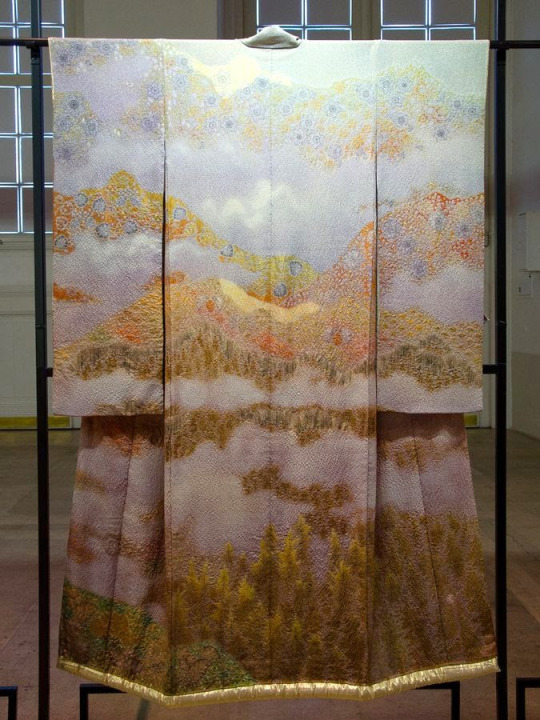
"Symphony of Light" - one of the most significant kimono creations of Itchiku Kubota. This series reflects his admiration for nature, the inspiration received from the contemplation of the endless play of changing light. Itchiku Kubota was a Japanese textile artist, most famous for reviving and modernizing a lost late-15th- to early-16th-century textile-dyeing and decorating technique called tsujigahana.
These five works was created in 1981.
5K notes
·
View notes
Photo

A M A Z I N G !!! 🌈15th century Tsujigahana technique relied on tie-dye, using drawings and foil impressions to create its designs. Through this method, each kimono design takes a staggering year and a half to complete. By the end of the 16th century such time-consuming skills were gradually abandoned for more efficient methods. But Kubota recognized the unique potential for the creation of his own art, and worked over several decades to revive the lost technique, now commonly known as Itchiku Tsujigahana. https://www.instagram.com/p/B1rqaPOARA7/?igshid=ewp72nbwx2bz
8 notes
·
View notes
Text
What’s That Thing? Part 4
On The Sixth Day of Fun, I present... an interesting question sent in by a reader! When I say that I take your questions to heart I really mean it as they’re what keep this entire thing going. Please, don’t be afraid to ask questions as it’s how we all learn ^^!
Anonymous asked:
“Hi! I was wondering, would you mind explaining what tsujigahana is? I've tried to Google it but I still don't quite understand how it differs from other dyeing techniques or how to recognize it on a kimono. Thanks and I hope you have a great new year!“
Tsujigahana (辻が花) is one of my favorite techniques, but I love the design motif too. Confused? Bear with me as we delve into the wonderful world of weaving!
So, let’s go back, aaaaaaaall the way back (temporarily) to the Momoyama Period (1573-1615). Why then? Well, it gave birth to this:
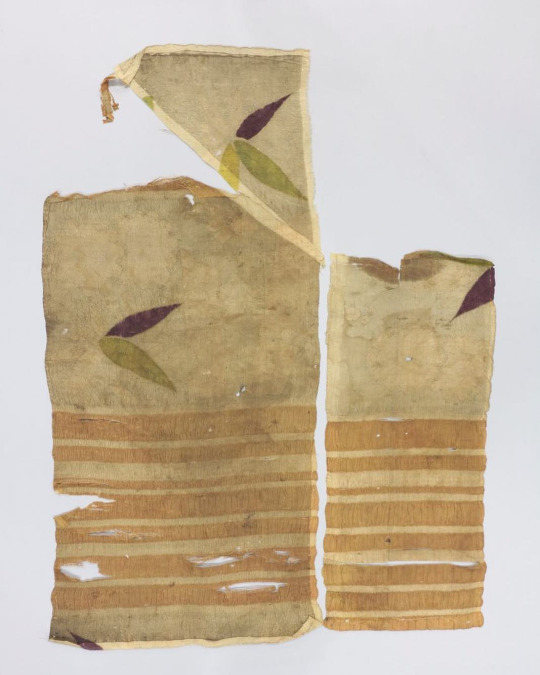
Image courtesy of Kogirekai on Instagram.
Sure. it doesn’t look like much, but it’s hiding a beautiful secret: its (now faded) patterns and designs. Obviously fabric doesn’t hold up forever, but that we have any fragments is almost a miracle. This browned fabric was once covered in bright colors, but that’s not all. It also featured very fine shibori (tie dyeing) and even hand painted motifs underneath of all that. However, around the time of the Momoyama Period this group of techniques was lost (war tends to disrupt things), and it would remain that way until the 20th century. What happened then? Well, this guy:

Image courtesy of the Itchiku Kubota Archive.
That’s Itchiku Kubota (久保田一竹), a man who was inspired by a fragment of fabric much like the one above. It was so intriguing that he made it his life’s work to revive the lost techniques of tsujigahana that he saw on that fabric. So, what did the revived tsujigahana entail? Well:
-Step 1: Drawing
The artist takes a brush and paints the desired pattern. The motif of tsujigahana came from the early Kubota designs that featured clusters of flowers with wisteria flowing down from them, hence “Tsujigahana” meaning “Trailing/Flowing Flowers.” To watch a video of this process click here.
-Step 2: Threading
The areas that would be dyed were small to say the least, with dyeing being done by threading off very small parts of the base fabric (almost always chirimen) until the parts where dye was not currently meant to be applied would be covered by thread.
-Step 3: Shibori Dyeing
Then, the garment would be very carefully dyed, usually only a few centimeters at a time to ensure that the chosen colors were correct. Sometimes sections would be dyed again in order to blend their colors, so this process for the same part would have to be repeated.
In the end, you have a one-of-a-kind garment that is incredibly laborious to produce. The average tsujigahana kimono takes months to produce, and it’s not at all uncommon for some to take more than a year or two.

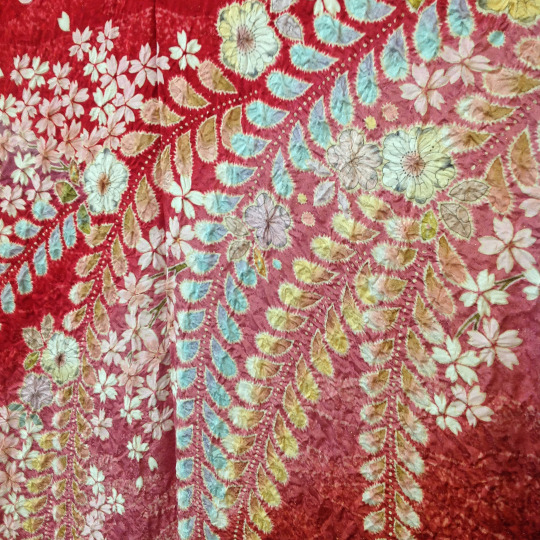

Images courtesy of Maruman Kimono on Instagram.
That’s what dyed tsujigahana looks like, but when we talk about tsujigahana as a motif we mean anything that looks like tsujigahana, but didn’t involve this dyeing process, such as this bag:
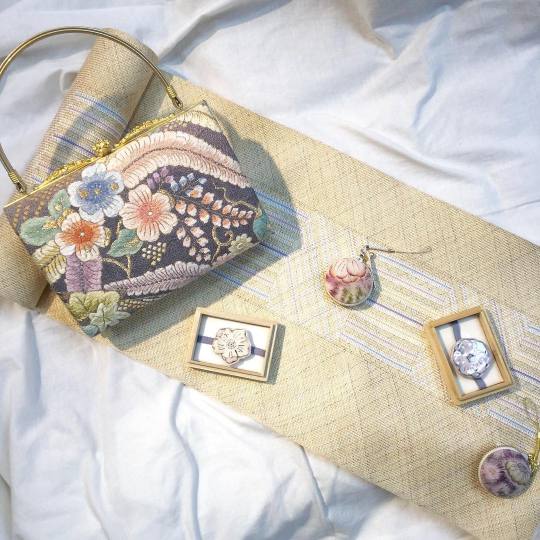
Image courtesy of Kyorin Kimono on Instagram.
Since the embroidery was meant to look like tsujigahana it’s also called tsujigahana since it’s referring to its literal meaning rather than what it’s come to represent ^^
#kimono#motif#tsujigahana#itchiku kubota#shibori#tie dye#japanese#silk#chirimen#着物#絹#辻が花#久保田#一竹#絞り#ちりめん
197 notes
·
View notes